Medals relating to Babies
This page shows medals that have babies as their subjects.
Please let me know if I missed a baby-themed medal that is already on this site but not part of this collection.
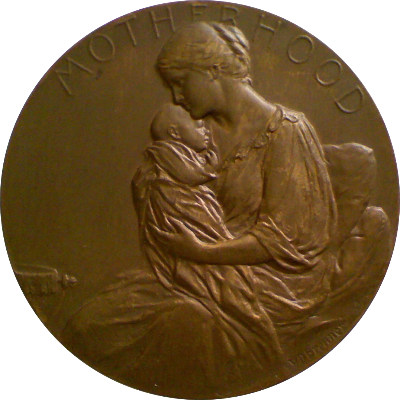
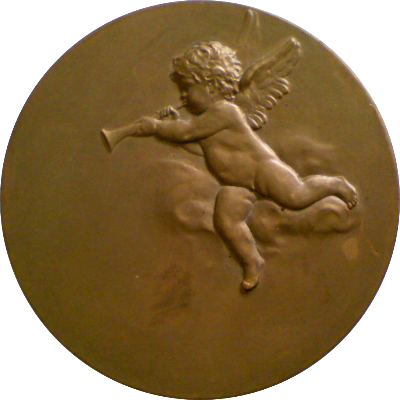
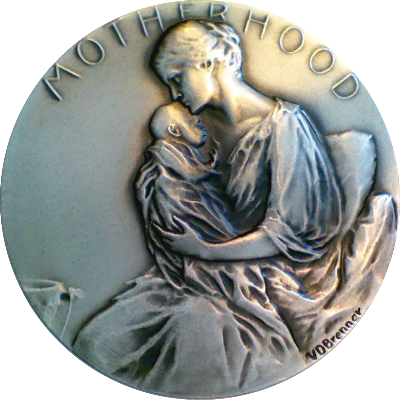


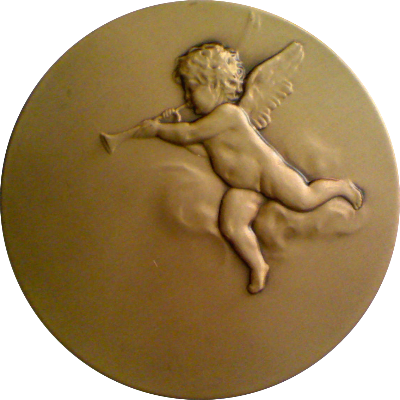
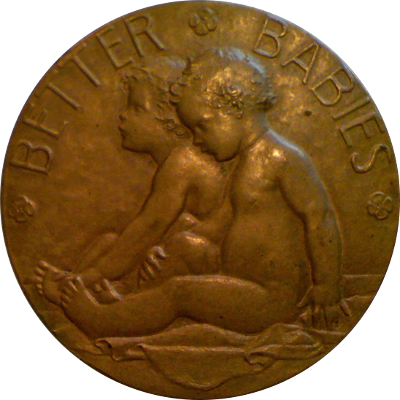
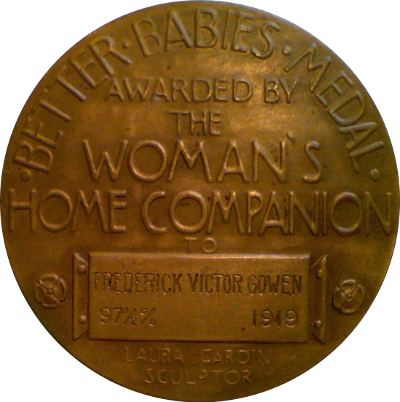
The obverse bears two nude babies. Above, BETTER BABIES. The reverse bears a field for the name of the recipient and the following legend: BETTER - BABIES - MEDAL / AWARDED BY / THE / WOMAN'S / HOME COMPANION; signed LAURA FRASER / SCULPTOR. The medal is edgemarked © CROWELL PUB. CO. 1913
The medal exists in a 33mm gold and a 51mm bronze variant. The depicted medal is the more common bronze variant. The Medallic Art Company struck it between 1912 and some time in the mid twenties and the total mintage is probably in the hundreds.
Elaine Leotti, in her paper "The American Woman Medalist," comments:
"Fraser's Better Babies Medal done in 1913 for the Woman's Home Companion is her only piece which can truly be called feminine. It is a well balanced medal, nicely executed if a bit on the sentimental side. The babies' bare flesh is soft, almost palpable, their curls and dimpled elbows invite touch, thus appealing to exactly the audience the medal was meant to impress."
Today, the title "Better Babies" almost invariably elicits a wince or a giggle. What was the background for this medal? As the Eugenics Archive of Cold Harbor Spring Laboratory puts it:
At the beginning of the 20th century, citizens concerned about high infant mortality in the United States took up the call of "baby saving." These initiatives relied on standards for normal child development, as well as input from healthcare professionals and public health officials. Better Babies Contests addressed this concern for child welfare and physical development, becoming the first eugenic competitions held at state fairs.
The first "Scientific Baby Contest" to combine these standards was initiated by Mary DeGarmo in 1908 at the Louisiana State Fair. DeGarmo linked the competitions to the social efficiency movement and its call for standardized homes, roads, and schools. Many Progressives believed that such standardization would improve the lives of young children.
With the assistance of Dr. Jacob Bodenheimer, measures of contestants' physical and intellectual development were carefully recorded. Winning contestants often appeared in graduation gowns and were presented with "loving cups" to mark their achievement. By 1913, the Woman's Home Companion magazine co-sponsored the contests, which were simply known as "Better Babies Contests." The magazine presented certificates signed by DeGarmo and Bodenheimer documenting that winners had "a sound mind in a sound body."
Mary T. Watts and Florence Brown Sherbon had organized Better Babies in Iowa in 1911. However, in 1920 they were provided new evaluation forms by Charles Davenport, who was then a member of the American Association for the Study and Prevention of Infant Mortality (AASPIM). Using Davenport's forms, they organized the first "Fitter Families for Future Firesides Competition" at the Kansas State Free Fair. Watts and Sherbon added a hereditarian explanation for human differences to the Better Babies Contests' earlier focus on child development and welfare. Thus completed the transformation of Scientific Baby Contests as a vehicle popularizing eugenic ideas.
The bronze medal measures 51mm in diameter and was struck by the Medallic Art Company of New York.
Sourced from the excellent E-Sylum and the Eugenics Archive.

This uniface medal shows young mother breastfeeding her baby, one hand holding her breast, the other supporting baby's head.
Maker's mark at 6:00 om edge, MEDALLIC ART CO. N.Y.
The Medallic Art Company acquired the rights to this French medal in 1933 and made a stock medal in one size. Chapu was primarily a portrait medalist who had a great influence on young American artists who studied under him at the Academie Julian. Among his American pupils were such greats as John Flanagan, Hermon Atkins MacNeil, and Bela Pratt.
The medal measures 85mm in diameter and was struck in bronze by the Medallic Art Company of New York.
References: Marqusee 113, Forrer, vol. 1 p.408
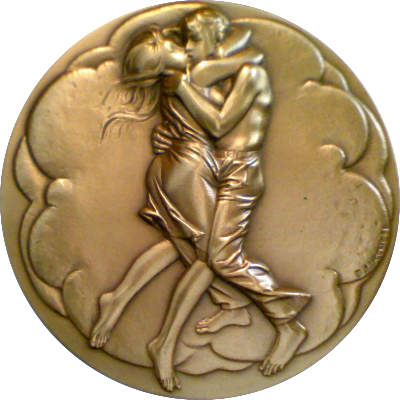

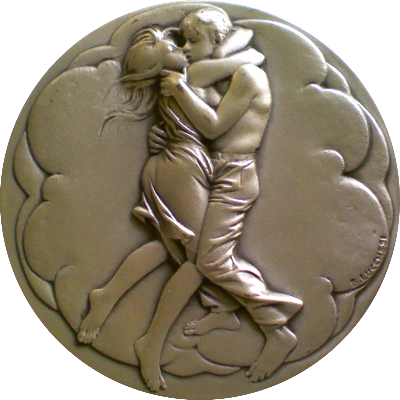
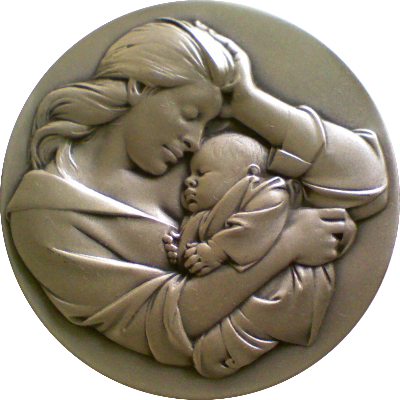
This medal was chosen as the 92nd issue of the prestigious Society of Medalists series in 1975. The obverse bears a young couple in passionate embrace. To right, B. LUCCHESI
The reverse bears mother holding baby in loving embrace.
Bruno Lucchessi attempted to make "a positive statement about Life - and the love of life." He showed two stages of love: the young, impetuous youths in passionate embrace, and the serene mother, loving her baby tenderly. In accordance with Lucchesi, the reverse can be seen as the fulfillment of the obverse. It could of course also be interpreted as a tale about the consequences of impetuous, youthful love.
This medal measures 73mm in diameter and was produced by the Medallic Art Company which struck 1,350 pieces in bronze and 185 in silver.

This uniface plaque depicts a nude woman, holding her baby on her knee, her foot resting upon the edge of a bathtub. Signed at bottom right, B LUCCHESI
Bruno Lucchesi loved to create images of mother and child, in both bas relief and full sculptural form. All of his works tend to be sensitive and sensual and this one is no exception. He captures a very tender moment and many parents will probably have flashbacks to the steamy warm bathroom, the giggling baby trying to escape the parent's grasp and the feeling of unconditional love and trust.
The plaque measures 61mm x 145mm and was cast in bronze and lightly gilded.